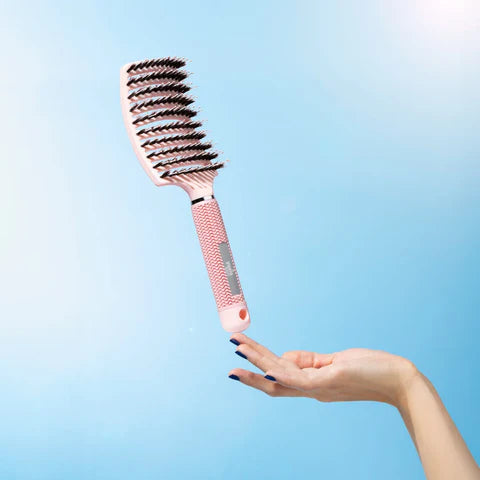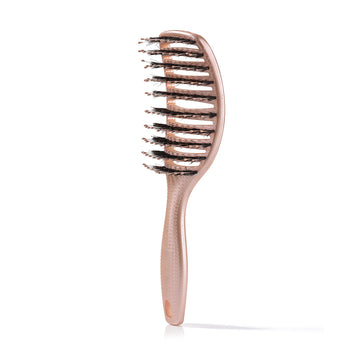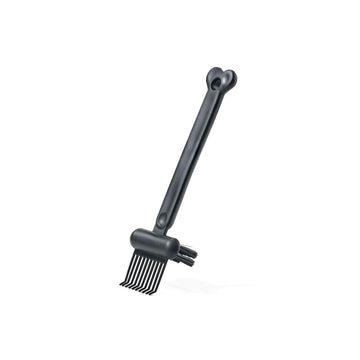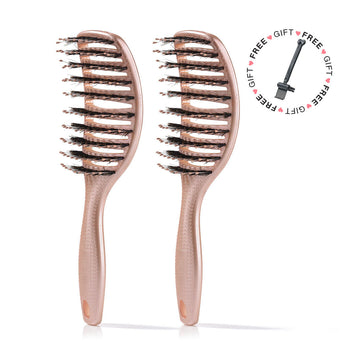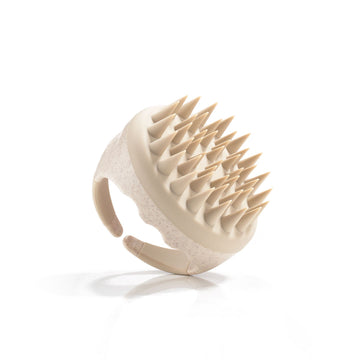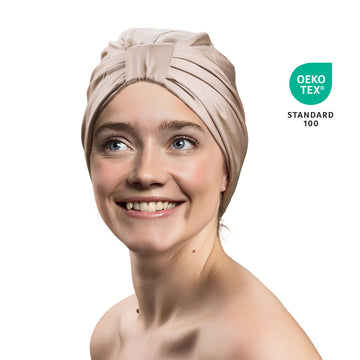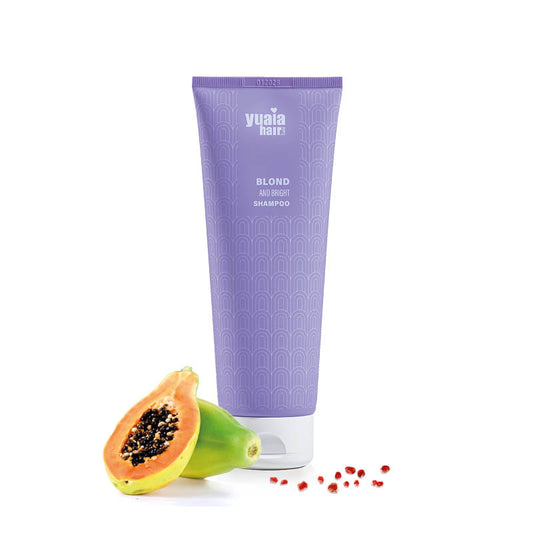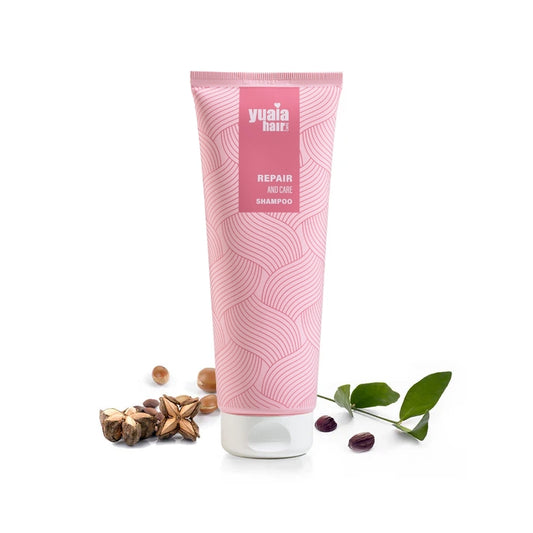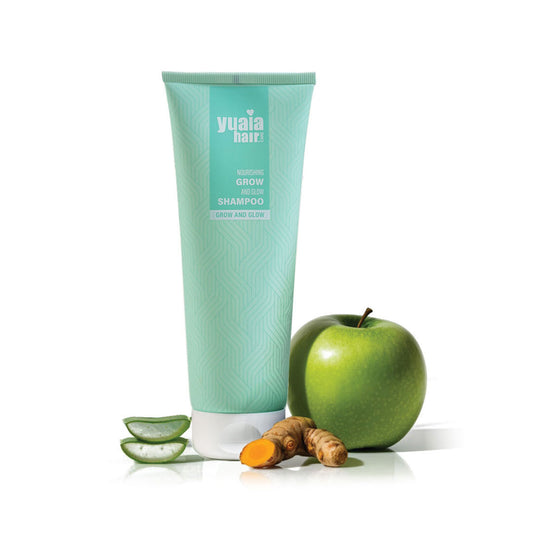
Texture and porosity
Your hair’s texture and porosity affect how shampoo spreads and cleanses. Texture refers to strand thickness and pattern, while porosity determines how easily your hair absorbs moisture. Coarse or curly hair may need extra time to work shampoo evenly across the scalp.
Highly porous hair absorbs product quickly and might require more shampoo, while low-porosity hair resists absorption and benefits from slow massaging with warm water. Adjusting your technique to match your hair’s texture and porosity ensures a cleaner scalp, even distribution, and healthier, more manageable hair after every wash.
Scalp condition and oiliness
Your scalp’s condition plays an important role in how much shampoo you should use.
An oily scalp often needs a bit more shampoo to remove buildup, especially if you exercise or use styling products regularly. Focus on cleansing the roots, where oil tends to collect. For dry or sensitive scalps, use less shampoo and massage gently to clean without irritation. Overwashing can strip away natural oils and increase dryness, while underwashing may lead to buildup or dullness. Adjust your shampoo amount as your scalp changes with the seasons or lifestyle - keeping it balanced helps maintain clean, healthy hair and a comfortable scalp.
Washing frequency
How often you wash your hair affects both how much shampoo you need and how your scalp adapts. Those who wash every few days may need a bit more product to remove oil and product buildup, while people who go longer between washes can often use less since the scalp produces less oil. Seasonal changes, workouts, and humidity also influence your ideal routine — you might need to cleanse more often in summer or after exercise. Finding the right balance helps maintain a clean, healthy scalp without overwashing, keeping your hair fresh and manageable between wash days.
Water quality
Water type affects how shampoo performs. Hard water's minerals like calcium and magnesium can leave buildup, weighing hair down and dulling its look. A clarifying shampoo or shower filter helps remove residue. Soft water rinses more effectively, often requiring less product for a clean, balanced result.
Environmental and lifestyle factors
Frequent exposure to pollution, smoke, or chlorinated water may require slightly more shampoo to remove residue effectively. Likewise, if you use dry shampoo often or style with oils and sprays, increasing the amount modestly once in a while ensures a deep, refreshing cleanse.
How to find the right amount to start with
Start with a small amount - roughly a teaspoon - and adjust based on your hair. If your hair is short and fine, that may be more than enough. For medium to long or dense hair, you might need about two teaspoons. It’s often better to add a little extra if needed rather than use too much from the start.

How to apply shampoo effectively
- Wet your hair thoroughly: Soak your hair completely with warm water to loosen dirt and product buildup.
-
Prepare the shampoo: Pour a small amount into your palms, mix with a little water, and spread evenly.
-
Apply to the scalp: Focus on your scalp and gently massage with your fingertips in circular motions.
-
Cleanse through the lengths: Let the lather rinse through your hair; avoid rubbing the ends.
-
Rinse thoroughly: Rinse until the water runs clear to remove all residue.
- Repeat if needed: Shampoo again if there’s heavy product or oil buildup.
When to use more or less shampoo
The right amount of shampoo can change with the seasons, your activity level, and your scalp’s needs.
In warmer months or if you exercise often, you may need a bit more shampoo to remove sweat and excess oil. During colder months, when the scalp is typically drier, using less shampoo helps prevent over-cleansing and irritation.
Pay attention to how your hair feels after washing. If it becomes greasy or heavy quickly, increase the amount slightly. If it feels dry, rough, or dull, use a bit less to help maintain natural balance and moisture.
Common myths about shampoo amounts
There’s a lot of confusion around how much shampoo is actually needed for clean, healthy hair. Many long-held beliefs - like using more product for better results — aren’t always accurate.
More shampoo doesn’t mean cleaner hair
Using more shampoo won’t make hair cleaner - in fact, it can leave residue, weigh your hair down, and even irritate the scalp. Instead of adding extra product, focus on the technique. Sometimes a gentle second cleanse works better than one overly foamy wash.
You should apply shampoo all over your hair
Another common misconception is that shampoo should be applied all over the hair. The scalp is what actually needs cleansing, while the lengths are cleaned naturally as the lather rinses through. Applying shampoo directly to the ends can strip moisture and cause tangling.
All hair types need the same amount of shampoo
Many believe everyone should use the same amount of shampoo, but hair type has a strong influence. Fine or thin hair usually needs less to avoid buildup, while thicker or oilier hair may require a bit more for a complete cleanse. Factors like humidity, hard water, and styling residue also affect how much shampoo works best for you.
Shampoo and conditioner do the same thing
It’s a common misconception that shampoo and conditioner serve similar purposes. In reality, shampoo’s main job is to cleanse the scalp and remove oil and buildup, while conditioner focuses on hydrating and protecting the hair’s lengths.
Skipping either step can leave your scalp unbalanced or your hair dry. Using both correctly keeps your hair clean, smooth, and healthy-looking.
Experiment and adjust
Try tracking how much shampoo you use for a few washes and note how your hair feels afterward. Adjust the amount slightly each time until your scalp feels refreshed and your hair feels light and balanced when dry. Different products and conditions may require small adjustments, so minor tests over time help you find what works best.
Finding what works for your hair
There’s no single perfect answer to how much shampoo to use, but understanding the different factors involved makes it easier to find what works for your hair. Start small, focus on your scalp, and adjust as needed. By paying attention to how your hair reacts, you can keep it clean, balanced, and healthy without overusing product.

Frequently Asked Questions
How often should you shampoo your hair?
It depends on your hair type and scalp condition. Most people do well washing 2–3 times per week, while those with oily hair or an active lifestyle may need to wash more often.
Is using too much shampoo bad for your hair?
Yes. Using too much shampoo can strip away natural oils, leaving your hair dry and dull. Focus on cleansing the scalp, and let the lather rinse through the lengths.
Why doesn’t my shampoo lather enough?
Many sulfate-free shampoos don’t lather much but still cleanse effectively. Add a little more water instead of more product to help it spread evenly.
Should you shampoo twice?
Only if you have heavy buildup or very oily hair. Double cleansing can refresh the scalp, but use a gentle formula to avoid dryness.
 2-4 day UK delivery
2-4 day UK delivery
 25.000+ satisfied customers
25.000+ satisfied customers
 Satisfaction Guarantee
Satisfaction Guarantee





